Gemstones from Madagascar
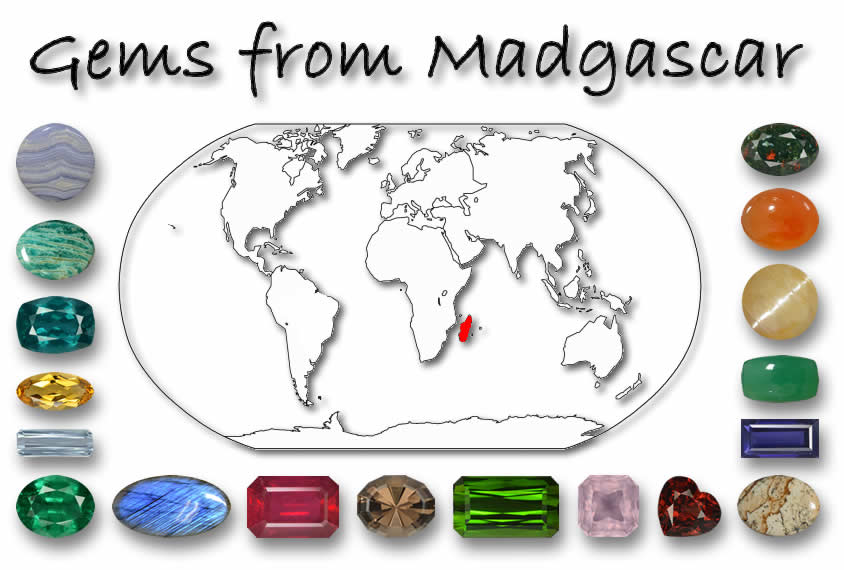
If you have had much experience with buying gemstones from around the world you quickly begin spotting a pattern of the most common sources. Again and again the sources seem to be concentrated in the same old locations - Mozambique, Tanzania, Zambia, Madagascar and Sri Lanka along with a number of neighboring countries.
A bit of geological research can tell you why.
Gemstones are usually created by a combination of pressure, heat and time. Add in a few minerals and chemicals and you have the recipe for colored gemstones.
More than 200 million years ago the world’s continents looked very different. Present day Africa, South America, India and the Antarctic were all one giant land mass with continental plates grinding against each other. This grinding provided the pressure needed to form gemstones and the heat was generated by the volcanic activity found where plates meet.
Beneath all these land masses lie enormous deposits of colored gemstones of nearly all types and at the centre of all this activity was Madagascar making it today perhaps the richest source on earth.
Ruby, sapphire, emerald, tourmaline, and garnet are well-known gemstones, but the list of exquisite stones extends far beyond these. Today, we’ll highlight a selection of Madagascar gemstones, showcasing some of the finest examples this remarkable island has to offer.
As an island isolated from the rest of the world for millions of years, Madagascar evolved some unique flora and fauna not found anywhere else on earth and, with human arrival possibly as recent as 1500 years ago, this wild life was left in relative peace.
Its history of gemstone mining is murky, full of tales of exploitation, boom and bust discoveries and illegal mines and smuggling. Madagascar’s potential is unlimited - the gem producing area is more than twice the size of Sri Lanka and Myanmar combined and that is just for sapphires and rubies.
During the period of French colonialism, gemstone discoveries were made but little interest was shown from abroad so locals had no incentive to give up farming and fishing for mining. This changed in the 1990s when the mines of Thailand began to run dry and the sources in Myanmar were blocked by the military.
The gemstone dealers in Chanthaburi, Eastern Thailand, where our offices are located, began to look further afield for reliable supplies of sapphires, rubies and emeralds. Tanzania, Mozambique and then, Madagascar began to take up the slack and produce more and more colored gemstones.
Let us take a look at the best of Madagascan gemstones. I have put them in order of value, availability and fame but it is quite vague and random at the same time! The quick guide at the bottom is in alphabetical order.
Sapphire
In a little over 20 years, Madagascar has gone from a minor player in the world of sapphires to now account for around 50% of the world’s supply. The discovery in 1998 of sapphires in the village of Ilakaka in the southern part of the island led to a gemstone rush that inundated the area with migrant miners.
Not only were the sapphires relatively plentiful but of such a high quality that they could rival those of Sri Lanka and Thailand. And not just the finest of blue colors, the sapphires found in the region can be found in pink, yellow and green as well as a Padparadscha shade as well.
The largest sapphire ever cut was discovered in Madagascar at 61,500 carats. It was carved by Alessio Boschi, depicting some of mankind’s greatest achievements, the Pyramids, the Great Wall, and some of the world’s most famous icons, Da Vinci, Confucius, Einstein and many more. It was sold for over $50m.

|
Birthstone for Month |
September |
|
Wedding Anniversary |
5th, 45th and 70th |
Ruby
Similar to the sapphire, discoveries of large ruby deposits in Madagascar are fairly recent and very significant. Within weeks of finding rubies in the Andilamena region, 40,000 miners had arrived searching for a big pay day.
Early findings were a bit mixed, quite small in carat size and needing heat treatment to get a good red color, but quality is improving all the time. The rubies newly unearthed in Moramanga and christened Malagasy Rubies are a stunning red color easily rivaling those found in Myanmar.
Madagascar will continue to be a major source of ruby rough and as conditions, roads and mining techniques improve this country will grow in influence as a supplier of rubies to the world.
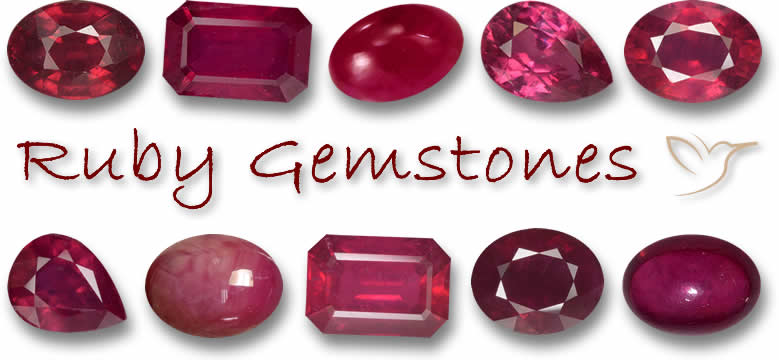
|
Birthstone for Month |
July |
|
Wedding Anniversary |
15th, 40th and 80th |
Garnet
Madagascar is a marvelous source of many varieties of garnet including the orange hessonite garnets and red pyrope garnets amongst others but it is perhaps the color-change garnets that attract the most attention.
Some of the best examples of color-change garnet can be found down in the southern part of Madagascar in Bekily. A unique blend of spessartine and pyrope has produced a gemstone that can switch from blue to red or feature brown, purple, orange or peach according to the lighting conditions. Some of these garnets can rival Alexandrite in quality.
In the north of the island, even some green demantoid garnets have been discovered.

|
Birthstone for Month |
January |
|
Wedding Anniversary |
2nd |
Apatite
The story may sound a little fanciful, but it goes something like this. The young son of a gold prospector was playing with a plastic shovel in the sand near his father’s mine when he uncovered a bright blue stone with the same neon color as the famed Paraiba Tourmalines of Brazil. This caused considerable excitement.
It turned out to be an Apatite gemstone which at the time was relatively obscure but with vivid blue, green and yellow colors that are simply stunning. The stone’s hardness is only about 5 on Mohs hardness scale so they will never match the value of Paraiba but with careful setting, make wonderful jewelry.
Apatites are available in large carat sizes with excellent clarity and as Paraiba are becoming more and more elusive and incredibly expensive, they make a great alternative.

Beryl
The beryl family of gemstones includes some of the most valuable and sought-after gem types in the world, including emeralds and aquamarines. The quantity, quality and variety of beryls found on Madagascar led to it being given the nickname, ‘Beryl Island’.
The largest crystal of any type was discovered in Madagascar - a 60 foot long beryl weighing 840,000 lbs!
Beryls of a particular shade of green are emeralds, those within a certain range of light blue are aquamarines, and gemstone with the right pink hue would be called morganite. But sometimes we can just refer to the beryl by its color, yellow beryl, golden beryl, green beryl even some newly found red beryl and all can be found in Madagascar, though the golden yellow variety is the most common.
These beryls are typically clear, bright, completely natural untreated gemstones with excellent hardness for jewelry and, since they do not have a ‘brand name‘, are outstanding value for money.

Grandidierite
When websites and bloggers discuss the rarest gemstones in the world (and they often do), Grandidierite usually pops up in their top ten lists. It is generally a stunning turquoise in color and only really ranges from sky blue to pale green. They are extremely rare in any form but transparent specimens even with visible inclusions or flaws are almost impossible to find and reach incredible prices.
Grandidierite was named in honor of Alfred Grandidier, the French explorer and scientist, who wrote 38 volumes on the flora, fauna and geology of Madagascar where these gemstones were first discovered back in 1902.
If it was not rare enough already, getting Grandidierite of the ground is back breaking too. Up in the hills of southern Madadgascar, miles from any village and accessible only by 4 wheel truck along dangerous dusty trails, miners dig channels deep into the hard barren earth using nothing more than simple spades and picks.
Then they carefully extract the rough gemstones and, since it is so far from civilization, they sort out the good stuff by the side of the mine in the glaring heat so they do not have to transport anything more than necessary. On top of that when they do return to town they have to run a gauntlet of local bandits wanting to steal their hard earned produce.
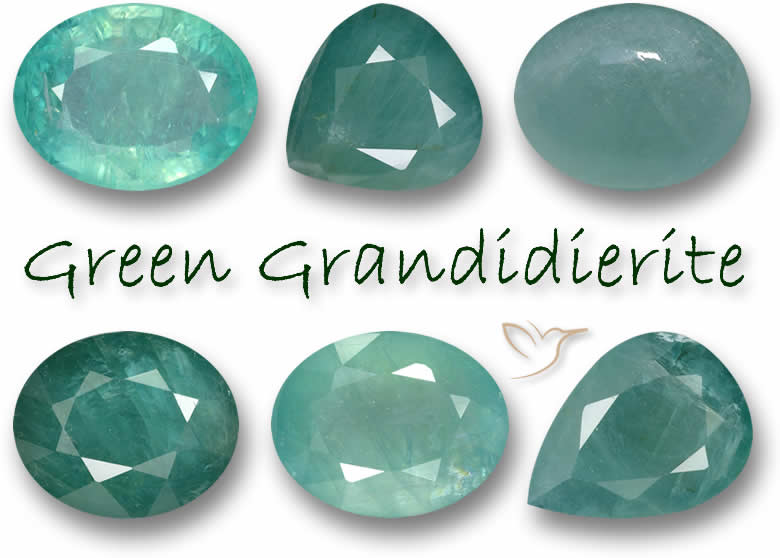
Aquamarine
Madagascar‘s aquamarines have a reputation as being the world’s finest. In the past, Santa Maria aquamarines from Brazil were seen as the epitome of this gemstone but the recently discovered ‘Double Blue’ gems from Madagascar are causing some excitement.
The word aquamarine comes from the Latin, aqua, meaning water and marina, which means 'from the sea' and when you look at of these beautiful gemstones you will understand why.
Picture the calm sea waters lapping the white sandy shores of Madagascar, the color in our minds is usually aquamarine and this is the color of the finest aquamarine gemstones too. From pale and light blues through to deep dark blues and some greenish blues as well it is easy to see how the gemstone got its name.
In many ways, aquamarines are a perfect gemstone. They cut cleanly and smoothly with little risk of cleaving or breaking, come in lovely clear large sizes with minimal or no treatments and can be shaped into any facet.
Madagascar also produces a cool and sophisticated looking Cat’s Eye aquamarine which is not only very attractive but also very spiritually protective.

|
Birthstone for Month |
March |
|
Wedding Anniversary |
19th |
Iolite
Although not particularly well known, Iolites are a truly fascinating gemstone. Madagascan Iolites are beautiful violet-blue gemstones which are very rarely enhanced in any way so are as natural a gemstone as you can find.
Iolite is a durable gemstone with a rating on Mohs’ Hardness scale of around 7 - 7.5, making it well-suited to everyday wear. Madagascan Iolite is a beautiful gemstone whose distinguishing characteristics are a high transparency and delightful violet blue coloring.
As it is nearly always completely transparent with no inclusions, it is the color that gives it value with the richer the blue the higher the price.
This gemstone is one of the few to display trichoism where it can seem to change color as you turn it from one angle to another. Deep violet can change to almost clear to even orange in some cases.
Its ancient nickname was the ‘Viking’s Stone’ as thin slices used by Scandinavian navigators to locate the sun on cloudy days and enable them to know where they were heading.

|
Wedding Anniversary |
21st |
Morganite
In 1910, prospectors on Madagascar discovered a gorgeous pink stone that eventually found its way to George Kunz, Tiffany’s famous gemstone expert. He identified it as yet another member of the ever growing beryl family (along with emerald, aquamarine and others). Kunz suggested the name Morganite after the New York financier, J P Morgan.
Still mined on the island to this day and with a reputation of being the finest available, morganite is the official national gemstone of Madagascar.

Citrine
Most of the world’s citrine isn’t really citrine, instead, many merchants sell poorly colored amethyst that has been heat-treated to achieve citrine’s trademark deep yellow coloring. This is because there is only a small amount of natural citrine left.
However, some natural citrine still remains in Madagascar’s deposits, which come in deep golden hues, all shapes and some significant sizes. This is a powerful spiritual gemstone and a birthstone for November.
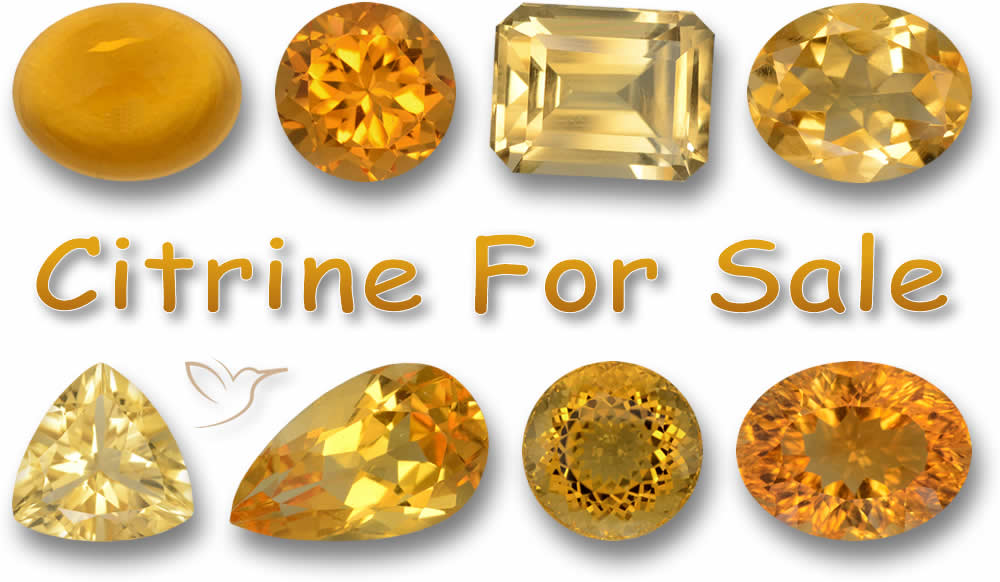
|
Birthstone for Month |
November |
|
Wedding Anniversary |
13th |
Amethyst
We get to meet people from most countries where gemstones can be found and Madagascar is no exception. In Thailand, sapphires are king but this often comes as a surprise for Madagascans as they hold amethyst in much higher esteem. Perhaps this is because sapphires are so plentiful in Madagascar and amethysts relatively rare!
This deep purple or violet gemstone has been adored for centuries and was once as valuable as any gemstone until huge discoveries were made in Brazil and Uruguay. Madagascan amethyst has a great reputation with a deep grape color and flashes of blue and red that match those found anywhere on earth.
Amethyst is another very powerful spiritual gemstone with an influence over the Crown Chakra.
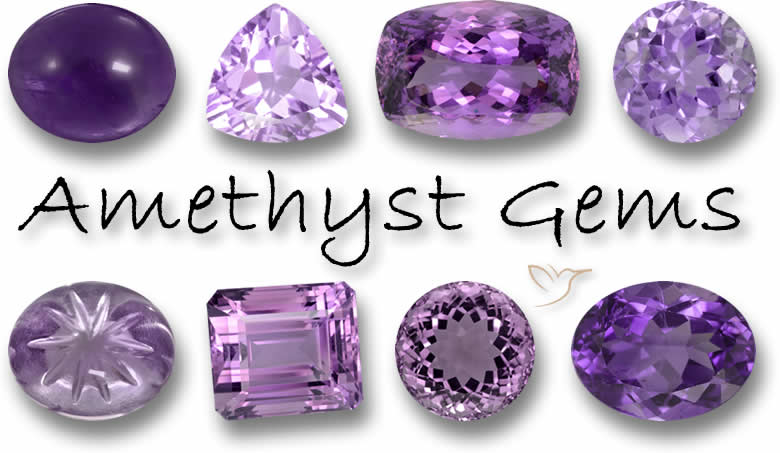
|
Birthstone for Month |
February |
|
Wedding Anniversary |
6th |
Emerald
Emerald is the most famous type of beryl found on ‘Beryl Island’. In fact according to the Guinness Book of Records, the largest ever emerald was found in Madagascar, it is 1.25 m long and weighs 536 kg (it is an emerald-in-matrix meaning it is lots of emerald crystals trapped in a big block of rock).
At the moment the most prized emeralds are found in Colombia and Zambia but as the geology below Madagascar is the same as that found in Zambia it is only a matter of time before discoveries of fine emeralds are made here.
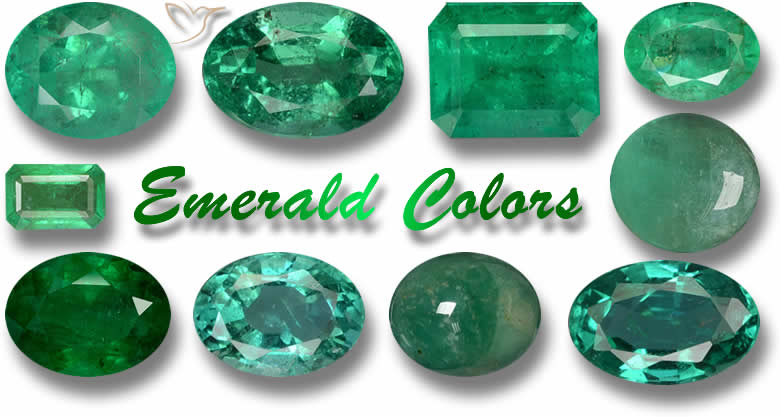
|
Birthstone for Month |
May |
|
Wedding Anniversary |
20th / 35th |
Sphene
A relatively unknown gemstone, sphene, also known as titanite, is a brilliant yellowish-green, green or brown gemstone with a high luster, unique color shades and an intensive fire that can compete with diamonds.
At the moment, most examples of this gemstone are found in Sri Lanka, but Madagascar, which shares a common geological ancestry with Sri Lanka, is also producing fine specimens and will continue to do so.

Tourmaline
Just about all varieties of tourmaline are found in Madagascar and they are especially admired for their deep hues.
Tourmalines come in a variety of colors due to mineral impurities, for example, rare blue gemstones are caused by iron, pink and red due to manganese, green because of chromium and vanadium and so on.
Tourmalines were first noted in Madagascar when famous explore and naturalist, Grandidier bought a large rubellite crystal whilst investigating the Mount Ibity area.
One particularly rare and interesting form of tourmaline that has been discovered on Madagascar is Liddicoatite, a multi-colored gemstone with bands or zones of different colors within the single stone.

|
Birthstone for Month |
October |
|
Wedding Anniversary |
8th |
Cat’s Eye Gemstones
Madagascar is the home of several types of Cat’s Eye gemstones including one we have mentioned above - Cat’s Eye Aqumarines.
Cat’s Eye or Chatoyance occurs in gemstones that contain thin parallel inclusions within the stone, known as silk. The light reflects from these inclusions to form a thin band across the surface of the gem that resembles the eye of a cat. Needle-like crystals of rutile and hematite are well-known for creating a cat’s-eye in many types of gemstone.
Cutters producing a cat's-eye stone must first find a rough gemstone with silk inclusions that are capable of producing an eye. Then they have to examine the rough and orient the stone so that the silk will be parallel to the bottom of the stone when finished, and the inclusions will be parallel to the long axis of the cabochon. If the angles are wrong, the stone will have an off-center eye or no eye at all.
Cat’s Eye Opal
Cat’s Eye Opal is a curious version of opal with interesting colors, markings and patterns plus, of course, the cat’s eye effect. Almost all of our Cat's Eye Opal is sourced from Madagascar and the untreated gemstones tend to be orange, brown or golden in color. Cat’s Eye Opal rates on the Mohs Scale of Hardness at about 5.5 to 6.5. It can be worn daily with some care or protective settings.

Cat’s Eye Scapolite
Cat’s Eye Scapolite is an extremely rare and virtually unknown gemstone with a striking appearance and deep dark colors such as brown and black. The cat’s eye phenomenon is particularly effective with these gemstones with the light band contrasting excellently against the shadowy background.
Plain scapolite is also found in faceted gemstones often with a yellow or purple color but because of their relative softness they do not make great jewelry.
Scapolite cat’s eyes are cut into cabochons - flat bottoms with a domed top - which are much less liable to chip or break and they can be set into interesting bezel rings or used as pendants.

Sillimanite Cat’s Eye
Sillimanite is a gemstone that is very similar to kyanite and andalusite and is usually found in yellow colors and faceted into gemstones when found in clean examples although this is quite rare and they are usually translucent at best.
Recent discoveries of sillimanite cat’s eyes in Madagascar are getting quite a bit of attention as they are transparent or white with a bright silver ray. They are not treated in any way other than cutting and polishing and make for a very interesting version of a cat’s eye gemstone.

Labradorite
The Schiller effect, labradorescence, light interference, lattice distortions are some of the scientific explanations for flashes of color in Labradorite gemstones but it is best just to see one of these gemstones dazzle for yourself.
The play-of-color is quite stunning as blues, purple, greens and yellows dance before your eyes as the stone is turns this way and that.
Although the gemstone gets its name from Labrador in Eastern Canada, the labradorite from Madagascar is more exciting than the stones found there - in fact the gemstones on sale in Canada are often actually from Madagascar!
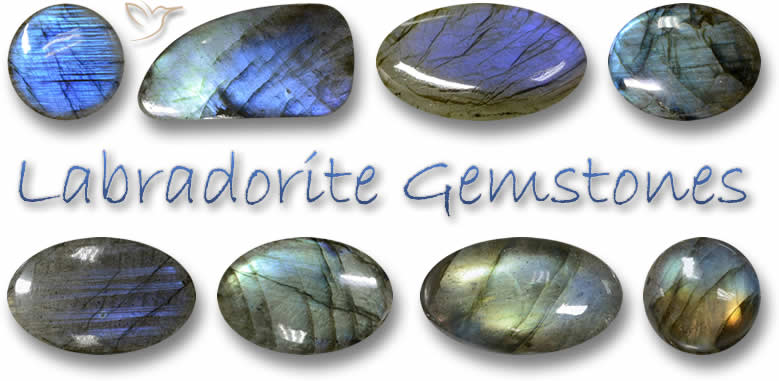
Chrysoprase
The name 'chrysoprase' originates from the Greek words, 'chrusos' and 'prason', meaning 'gold' and 'leek', respectively; referring to its leek or apple green color and bright hues.
Chrysoprase, like all other varieties of cryptocrystalline quartz, is composed of crystals that are too fine to be seen as distinct particles, even under magnification and is a type of chalcedony.
Its cheerful green color, affordability, hardness and durability make it an ideal gemstone for all manner of jewelry items.

Rose quartz
The central region of Madagascar, including the Antananarivo and Vakinankaratra provinces, has such rich deposits of rose quartz that it has become a major supplier of this famous love stone to the rest of the world.
It has a softer color than other locations, with a milky lilac hue not found elsewhere.

Smoky Quartz
Along with rose quartz, citrine, amethyst and carnelian, Smoky Quartz can be found in large supplies in the igneous rock environment of southern Madagascar.
Madagascan smoky quartz is a spiritually protective, grounding and cleansing crystal and comes in very affordable prices and large sizes.

Jasper
Jasper is a form of chalcedony quartz found all over the world and can be difficult to classify but generally it is a spotted or speckled gemstone with a variety of colors often occurring on the same gemstone.
The most famous jasper found in Madagascar is probably the Ocean Jasper so called because of the mottles circles on the surface that can resemble bubbles or perhaps the remnants of ancient sea life.
Ocean Jasper was mentioned nearly 100 years ago but then lost until the beginning of the 21st century when it was discovered in the north of the country. Sadly it may have been all mined out already.
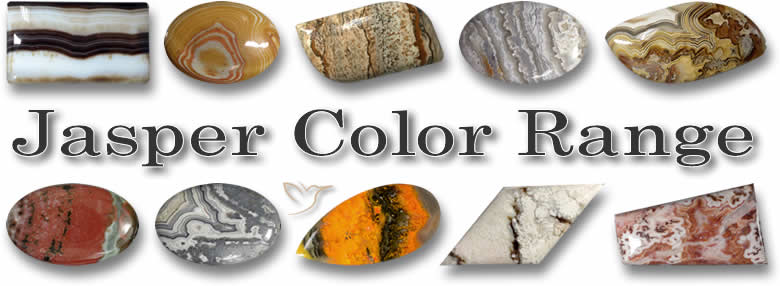
Carnelian
Carnelian is a translucent to opaque orange to red form of chalcedony quartz. It is considered a lucky gemstone and has been associated with royalty since the dawn of civilization and was often used as a seal or an amulet.
The Prophet Muhammad had an inscribed carnelian signet ring which he used as a seal for important documents and it is widely worn by Muslims to this day.
The carnelian gemstones from Madagascar are some of the finest available and some have put this down to the brush fires that often sweep through the Majunga mining areas naturally (sort of) heating the stones to a fine red color.
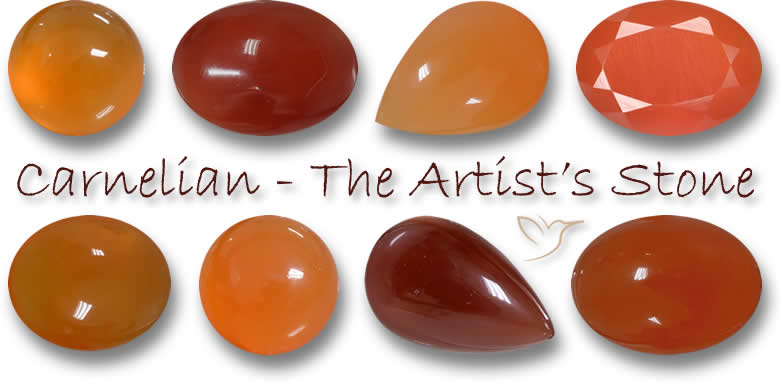
|
Wedding Anniversary |
17th |
Agate
Agate is the generally banded or striped form of chalcedony quartz and is found all over the world in fairly abundant quantities.
The lovely colors and unique patterns found in agate mean each stone is unique, they may share common features and distinctive styles amongst the varieties but each agate is a one-of-a-kind.
Even though this gemstone seems so exotic and unusual it is very affordable and appeals to jewelry lovers and collectors alike and its reputation as a stone of health and balance is unparalleled.

Amazonite
Amazonite's unique patterns, swirls and stripes make them a particular favourite of artisan jewelry makers who know they will have a one-of-a-kind piece when they have completed their work.
Amazonite is a modern or trade name for microcline. The name was coined by German mineralogist Johann Breithaupt in 1847 but we are not really sure why he came up with the name since this gemstone is not found either in the Amazon River or the Amazon Jungle. Perhaps the name sounded a bit more exotic than microcline or its other name, Green Feldspar.
However this turquoise blue-green gemstone with the nickname of ‘the Stone of Hope’ is found on the island of Madagascar

Bloodstone
In the world of gemstones, it would be difficult to find one with more history and spiritual importance than Bloodstone. Its most famous legend is that the crimson red spots that embellish the deep green gemstone represent the blood of Jesus, but Bloodstone’s symbolic power stretches back to Ancient Babylon, Egypt and Greece.
Bloodstone is a dramatic looking deep green Chalcedony gemstone speckled with red, brown and orange spots and is part of the chalcedony family along with agate, carnelian, onyx and jasper. It is often used in men’s jewelry items and for its spiritual power.
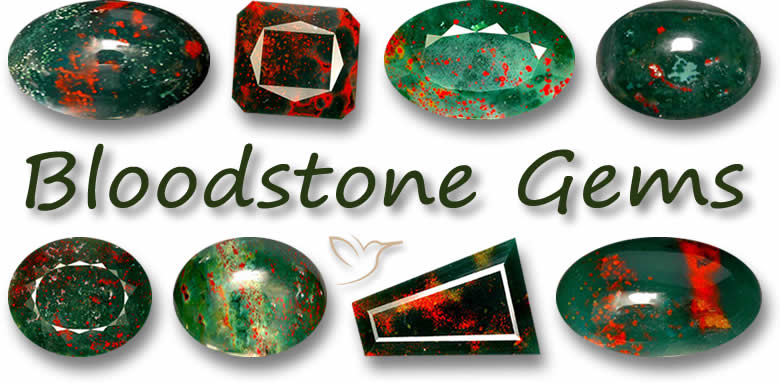
So there we have our round up of the best gemstones in Madagascar although I am sure there will be more discovered in the years to come. Local Madagascan miners do not really have the funds to invest in the geological research and infrastructure needed to run a sophisticated mining operation. At the same time, foreigners are a little hesitant to invest when faced with the corruption and protectionism that still exists in Madagascar even though things are moving in the right direction.
| Gemstone | Color |
|---|---|
|
Agate |
Multi-colored |
|
Amazonite |
Green |
|
Amethyst |
Purple |
|
Apatite |
Blue / Green / Yellow |
|
Aquamarine |
Light Blue / Turquoise |
|
Beryl |
Yellow / Golden |
|
Bloodstone |
Dark Green |
|
Carnelian |
Red / Orange |
|
Cat’s Eye Opal |
Golden Brown |
|
Cat’s Eye Scapolite |
Brown / Black |
|
Chrysoprase |
Green |
|
Citrine |
Yellow |
|
Emerald |
Green |
|
Garnet |
Multi-colored |
|
Garnet Color Change |
Multi-colored |
|
Grandidierite |
Turquoise |
|
Iolite |
Violet Blue |
|
Jasper |
Multi-colored |
|
Labradorite |
Multi-colored |
|
Morganite |
Pink |
|
Rose quartz |
Pink |
|
Ruby |
Red |
|
Tourmaline |
Multi-colored |
|
Sapphire |
Multi-colored |
|
Silliminite |
White / Cream / Brown |
|
Smoky Quartz |
Brown |
|
Sphene |
Yellow / Green |

